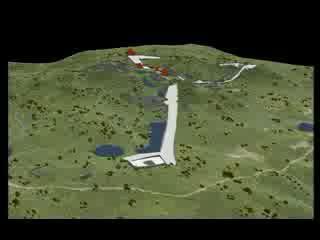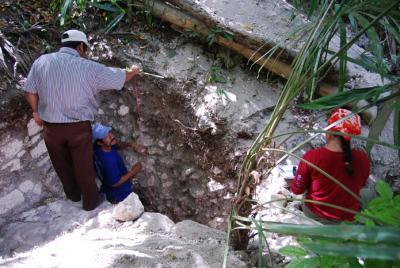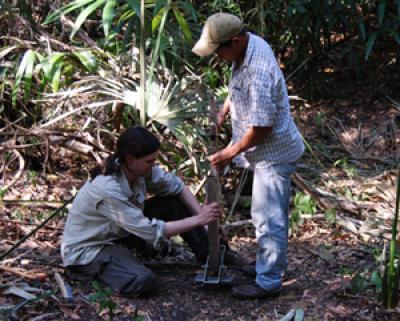Mayan temple
Said UC's Lentz, "The goal is to understand how the Maya lasted as a highly complex society for well over 1,500 years in a tropical environment. Their resource needs from forests were very great because they used trees to construct monumental buildings, for the creation of plaster (which was a surface cover for buildings and roadways), for cooking and many other needs. They had a sophisticated, long-lasting management system that apparently began to go awry during the Late Classic period." (AD 600-770)
He added, "It was this environmental conservation and water management that led to prosperity of a very high magnitude for a long period at Tikal. Similarly, when the city abandoned its conservation methods during the eighth century and depleted its natural resource bases, this led to a host of changes, such as altered hydrologic cycle and soil erosion on a broad scale that ultimately resulted in environmental deterioration. That, in turn, contributed to changes in availability of food, fuel, medicinal plants and other necessities. Over time, the result was societal disintegration."
In fact, Tikal's 1,500 years of affluence declined dramatically in the ninth century, and by AD 900, the site was largely abandoned.

A UC team is unveiling groundbreaking research on the agroforestry and water-management practices of the Maya over a 1,500-year period. See this flyover of the Tikal site developed by the UC team. It shows developments of homes (in brown), temples (in orange), reservoirs (in blue) and roadways (in white) from the pre-Maya period at about 100 BC to the start of the Late Classic period in about 600 AD.
(Photo Credit: Eric Weaver, University of Cincinnati)

An ancient Mayan reservoir at Tikal is unearthed, providing new insights into how the ancient Maya built for water management.
(Photo Credit: University of Cincinnati)

There were several large water reservoirs surrounding the site of Tikal. Here, Brian Lane of UC takes a soil core from the Corriental reservoir, the southernmost of the major reservoirs. Here, the depth of the reservoir is being determined.
(Photo Credit: University of Cincinnati)
Source: University of Cincinnati